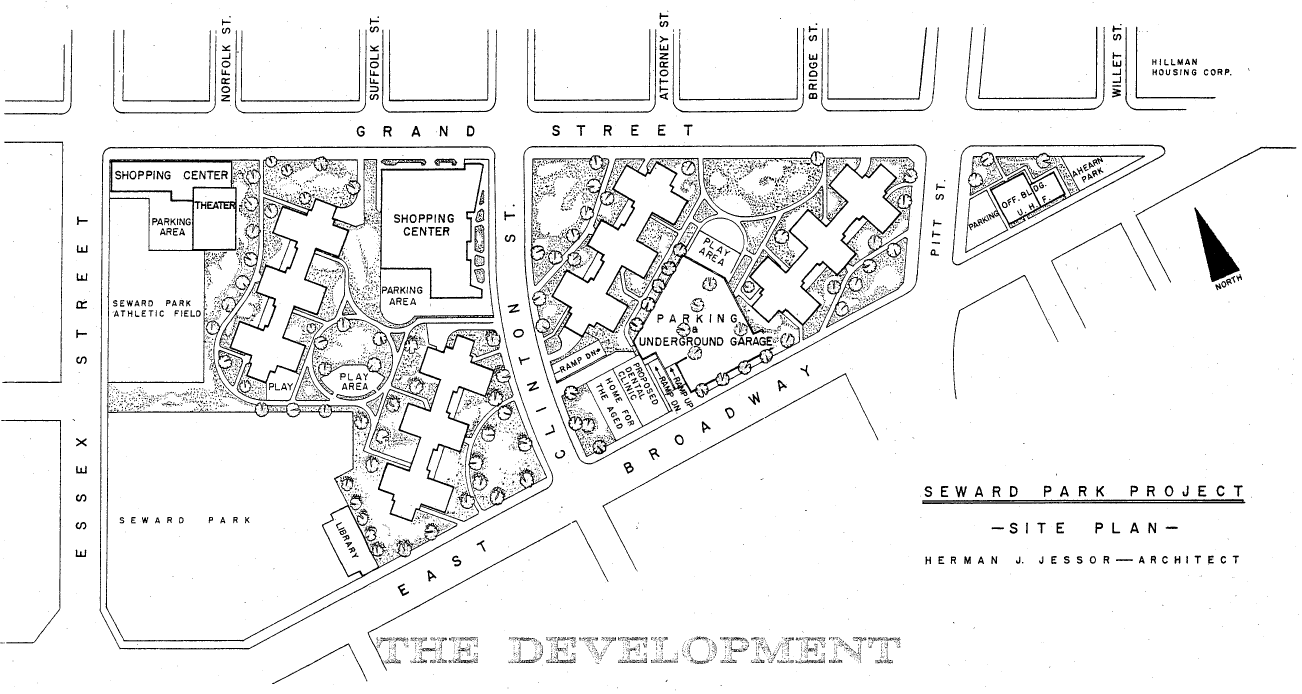Currently there is a petition circulating asking the DOT to close the Clinton Street access to the Williamsburg Bridge, in an attempt to address the odious traffic problems.
In 2012, in response to the killing of a middle school student trying to cross Delancey at Clinton, the DOT made a bunch of changes to improve pedestrian safety on Delancey, including narrowing the distance needed to cross and extending the time available to cross. They also banned left turns from southbound Essex to eastbound Delancey (forcing southbound cars to go down to Broome and over to Norfolk before turning onto Delancey), and they reopened the Clinton Street access to the bridge, which had been closed for many years. The rationale given in DOT presentations for reopening Clinton was that it would reduce speeding and red-light running on Delancey, since previously cars waiting at the light at Norfolk would have a vehicle-free path ahead of them inviting them to gun it when the light turned green.
Those changes happened around the same time as a bunch of other things, including:
- Unending construction on Houston,
- Grand changing from 2 car lanes each way to 1 car lane and 1 bike lane each way, and getting traffic-calming medians
- Clinton below Grand having its traffic lanes narrowed and bike lanes added
- Tolls going up (in 2009, 2013, and 2017) on the tolled crossings
As soon as Clinton was reopened, traffic started backing up on Grand, sometimes even on the FDR.
In 2013-2014 the DOT tried to address the backups. They made the green light at Clinton and Delancey longer so more cars could turn onto the bridge with each light. They added back the second westbound car lane on Grand so that cars that didn’t want to turn onto the bridge at Clinton could bypass the cars that did want to turn. They added signs on the southbound FDR indicating that Houston was an alternate route to the Williamsburg Bridge. And those things DEFINITELY helped.
But in the last year or so traffic has gotten worse again. I am not sure why, but suspect Essex Crossing construction has made traffic flow a little slower, and the March 2017 toll increase may have pushed a few more cars toward the free crossings.
It’s possible that closing the Clinton approach would help, as it would stretch the Grand Street traffic out a couple more blocks, and Norfolk still has two northbound lanes (when they’re not blocked by Essex Crossing construction) that allow a higher volume of cars to turn onto Delancey with each light vs. Clinton. But I am skeptical, as I think it will primarily move the problem to Norfolk and reintroduce some of the speeding on Delancey. It will also become dangerous to cross Grand on the west side of Clinton, as there will be many more cars turning left onto Grand from northbound Clinton to try to get to the bridge.
My view is that tolling the bridge is the only real solution. With the MTA moving all their tolled crossings to cashless tolling, there are no real technical hurdles to doing that, but there are big political ones. So stopgaps might include further improving the signage that tells drivers they can use Clinton orNorfolk to access the bridge (almost nobody uses Norfolk, even though at peak times it’s probably faster to bypass all the traffic in the right lane on Grand and just go to Norfolk), and adding traffic cops along Grand at peak times with a mandate to strictlyenforce red lights, turning from the wrong lane, driving in the bike lane, honking, etc.
Fortunately, the Community Board is focused on the issue and the DOT is currently studying it. Only time will tell whether they will come up with a good solution or not.

